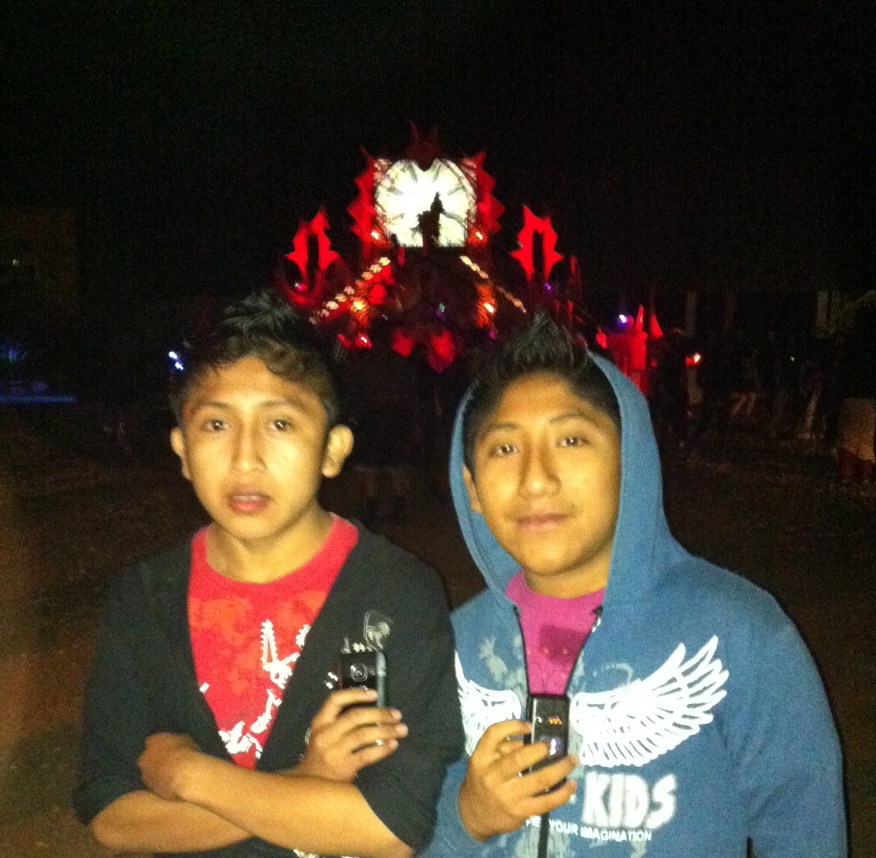The Synthesis 2012 Festival near Chichen Itza, Mexico got off to a rocky start, but by the time the Mayan Long Count calendar ended on Dec. 21, it had transformed into an inspiring example of working through adversity to build community and connect with another culture.
According to a variety of volunteers and performers associated with the festival, Executive Producer Michael DiMartino over-promised and under-delivered just about everything: hotel rooms, shuttles to and from Cancun and other cities, food for volunteers, and local permission for a stage at Pyramid Kukulkan and the camping area where thousands of festival-goers stayed. On top of that, the bus carrying the sound system and other supplies got turned around by authorities at the border, causing the crew to scramble locally for sound and building equipment and supplies.
“Not everything came together the way we planned, because it’s Mexico, but everyone came together and created community,” Debra Giusti, the Harmony Festival founder who helped DiMartino with Synthesis (and who calmly and creatively resolved many of its problems, say several sources) told me on Dec. 23, the festival’s final day. “There was so much love and unity and can-do spirit.”
At one point before the festival officially began on Dec. 20, federal police and local officials shut down work on the Ascendance stage, blocked access to the adjacent camping area, and gathered everyone there into a group, dressing down DiMartino and taking him away in a police car to resolve their differences.
The crew of mostly Northern California residents that showed up more than a week before the festival began to build the Ascendance Stage that would host the DJs and other musicians worked through their frustrations with event organizers to forge strong connections with the mayor and other locals, throw a great party, and leave a lasting gift for the Mayan people.
“We fed everyone, spent almost $16,000, dealt with the authorities, made friends with all the locals, and stayed with our intention to build this temple for the galactic alignment,” Ken Currington, aka Shombala — one of the project leaders working beside Tulku, the main guy — told me. He said he felt proud and humbled by the experience.
The impressive and ornate pyramid-style temple was built with locally sourced wood, bamboo, and steel in the parking lot of a Mayan stone-carving business in Xcalacoop — just over 9km from the main festival hub in Piste Pueblo, past the Pyramid Kukulkan in Chichen Itza — after the locals embraced their offer to leave it as a permanent display structure for the Mayan artwork.
“One local Mayan who came by was in tears and he said this was the one of the best offerings to the Mayan people,” Currington said.
The visitors helped prepare and participate in a locally produced festival marking the end of the Mayan calendar on Dec. 21, a gesture of goodwill that helped overcome initial missteps. Some local Mayan elders also took part in a Synthesis ceremony at the pyramid in Chichen Itza at sunrise that day.
At the all-night dance party that began on Dec. 22, which featured a long list of Bay Area DJs and other performers, local families came to see the spectacle, which also included live creation of paintings, mandalas, and other artworks and aerial yoga swings. All the locals I talked to seemed to enjoy and appreciate the event, except for one stern-faced police officer who simply said, “No se (I don’t know),” when I asked what he thought.
“This was amazing because it drew people from all over who felt called to be here,” Giusti said. “They went into the jungle and made art.”
One area where DiMartino (who hasn’t yet responded to my questions about problems with the festival) did seem to deliver was in booking and delivering keynote speakers, who spoke from the stage at the Hacienda restaurant and hotel complex in Piste Pueblo, where meals were also provided to VIPs and those who bought the most expensive tickets.
Keynote speaker Don Miguel Ruiz, a Toltec author and thinker, told the Synthesis 2012 Festival crowd that changing the world starts with an internal change, a change in consciousness. “If we can change our own story, if we can find that peace and that joy,” he said, then we can project that out into the world. “The change we want to see in the entire society starts with us. We can’t give what we don’t have.”
At this point, it’s our collective responsibility to seize the moment and help bring about the transformation that the world is waiting for. “We can be part of the solution for humanity or we can be a part of the problem,” he said.
Manifesting the solutions begins by tapping our creative energies. “Whatever we create first begins in our imagination,” Ruiz said. “Then we make it real.”
“In my imagination, humanity has already changed. We are going in the right direction. We can make it happen. Day one is today,” Ruiz said on Dec. 22, drawing a raucous reaction from the large crowd. “Everything we did in life is completely irrelevant. Right now is the moment.”
Another keynote speaker, Caroline Casey of KPFA’s “The Visionary Activist” show, also talked about the importance of healing the world by transforming ourselves, and an ancient Hawaiian concept called ho’oponopono, a practice of reconciliation and forgiveness.
As she said, “To love disharmony back into harmony makes the harmony so much more.”

